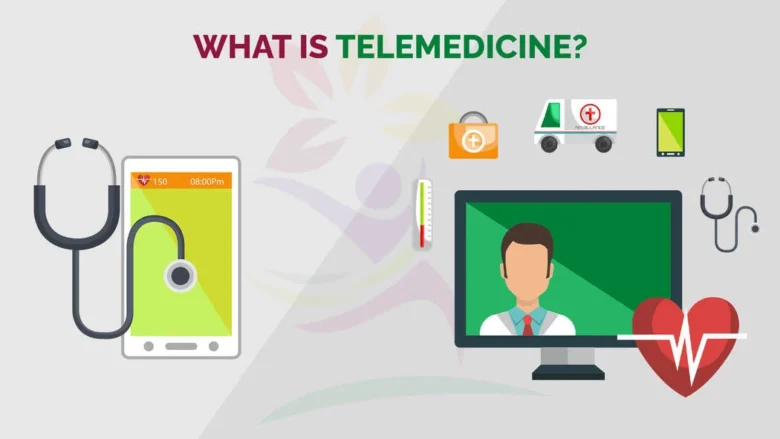Telemedicine allows patients and physicians to communicate from a distance, which reduces travel-related stress, time, and expense for both parties involved. Digital practices necessitate less space and operating expenses, thereby freeing up funds for treatment technology or direct patient reimbursement.Physicians are eager to embrace technological integration. 87% of Sermo poll respondents feel telemedicine has gone from being an “add-on” to an integral component of modern medicine.
1. Accessibility
Telemedicine connects patients in remote locations with physicians. It’s especially useful for rural communities or those on low incomes that cannot afford regular visits to a primary care practitioner. Patients can make appointments quickly and easily through an effortless registration process that uploads verification documents and medical reports; certain telemedicine systems allow clients to include family members if authorized by their physician.
Technology allows healthcare professionals, like occupational and physical therapists, to observe people in their natural environments for more accurate evaluations and diagnoses, while simultaneously decreasing exposure to others and reducing disease transmission risks.
2. Convenience
Patients now have the convenience of consulting their physicians without traveling to physical offices, saving both gas costs and the hassle of child care arrangements or leaving work early. Furthermore, it reduces waiting time while making healthcare more cost-effective for families.
Telemedicine uses both mainstream telecommunication technologies and cutting-edge information technology to deliver healthcare services remotely—from real-time video consultations to remote monitoring services and mobile health applications. Occupational and physical therapists can visit home-bound patients to conduct more comprehensive assessments of their mobility and functional capabilities, which ultimately saves on travel costs and hospitalization expenses.
3. Patient Engagement
Patient engagement refers to encouraging individuals to make informed decisions regarding their healthcare, which in turn reduces unnecessary healthcare costs while improving health outcomes. Telemedicine allows patients to book virtual appointments, upload medical history documents and verification papers, X-ray images, and more in order to communicate with doctors directly and quickly receive answers and advice from specialists.
At the consultation stage of a patient engagement framework, healthcare teams begin recognizing patients as reliable sources of information about their symptoms and healthcare experiences. Digital tools expand to include secure messaging capabilities as well as reporting capabilities for symptoms or illnesses that arise; care protocols incorporate patient preferences and priorities before moving towards shared decision-making processes.
4. Tracking
Telemedicine refers to an umbrella of digital healthcare services. This field encompasses remote patient monitoring services like teletherapy and virtual visits using real-time interactive telephone technology. Patients who use telemedicine experience greater convenience and higher satisfaction, including fewer visits to emergency departments and greater compliance with medications as prescribed.
Policymakers and doctors must recognize these positive benefits of telemedicine policies to make them permanent by finding a balance between expanding access to care while controlling costs and quality—while not exacerbating existing disparities.
5. Personalized Care
Telemedicine initially required expensive videoconferencing equipment and diagnostic peripherals to transmit medical data between locations. But today it incorporates mainstream information technologies like electronic medical records (EMRs) and intuitive EHR systems, which streamline workflow by centralizing patient data, minimizing documentation errors, and increasing interoperability between healthcare providers.
Studies demonstrate the many advantages of telemedicine for both healthcare quality and access and cost efficiency compared to in-person care. Chronic conditions can be monitored remotely with fewer hospital visits necessary. Telemedicine also allows family members to join consultations remotely and assist with decision-making processes, resulting in greater healthcare outcomes and patient satisfaction.
6. Connectivity
Telemedicine encompasses an expansive set of technologies and applications. At one end of the spectrum are straightforward telephone consultations between patients and clinicians, while at the other extreme there are more experimental technologies such as telesurgery—in which an operating surgeon receives visual and tactile data to guide instruments from remote locations—in which visual/tactile information helps direct surgical instruments remotely.
Telemedicine allows patients who need to consult an out-of-town physician to do so, and family members and loved ones can be included to answer questions and take notes during virtual visits with that provider. This guarantees prompt understanding and resolution of the patient’s health concerns, thereby reducing risks like errors or readmissions.
7. Ease of Use
Telemedicine has quickly become an integral component of healthcare facilities’ practices, from medical offices and skilled nursing hospitals to rehabilitation hospitals. This technology offers an ideal way to remotely monitor patient conditions and ensure their physician is treating them effectively—particularly those suffering from chronic diseases like diabetes or heart disease.
Additionally, virtual care can assist in treating high-risk infants or babies by eliminating long-distance transport costs and improving accessibility for people living on cultural or geographical margins.
8. Convenience
Telemedicine services provided by doctors enable their patients to avoid traveling or waiting for an appointment, saving time and money through reduced secondary expenses like petrol. Patients can access care without jeopardizing their work and family responsibilities; instead, they can meet with their doctor from the comfort of their home, rather than needing to arrange time off work or arrange childcare services.
Telemedicine can be particularly useful for patients with disabilities and other groups whose needs can otherwise be difficult to meet, such as school nurses using it to network with healthcare providers remotely and aid students’ health without leaving school grounds, thus cutting educational, logistical, and financial costs for all involved [37].
9. Scalability
Scalability refers to a business or system’s capacity for handling increasing volumes of work without experiencing operational inefficiency, providing greater adaptability for changing market demands and consistent growth trajectories over time.
Vertical scalability refers to an application’s capability of handling hardware upgrades easily without disrupting or slowing down its entire system. For instance, upgrading CPU, RAM, or storage capacities without taking down all systems at once would allow vertical scalability. Horizontal scalability works similarly to vertical scalability, except it enables you to add servers that process data faster without taking existing servers offline—this process is known as elastic scaling.




